If you still remember, Sharp showed 8K TV at this year's CES. Every video technology innovation can bring users' visual experience to new heights, such as DVD players and Blu-ray Disc players. Also, for example, SDTV signals to HDTV signals, the importance and significance of video technology is self-evident. . In recent years, ultra high-definition 4K television broke out, and now 4K television has covered three market segments, namely high school, low school, and has demonstrated the domination of unification. Unfortunately, the 4K that the manufacturers advertised was only a “stepping stone†in the era of Ultra HD, and the higher-order 8K was the real master of the next era.

Ultra High Definition 8K TV Technology Detailed Analysis Ultra High Definition Television (UHDTV), translated as Ultra HDTV, and the UHDTV TV standard official registered name is “Super Hi-Visionâ€. Strictly speaking, Super Hi-Vision is the next generation TV. The exact name of the video technology. So what is the relationship between the Super Hi-Vision standard and 4K and 8K TVs? We illustrate it with a picture.

Since its inception, 4K television has been lack of strict standards support. In addition to the rigid resolution requirement of 3840×2160, the remaining indicators continue to use the existing Full HD (1080p) standard, which is completely inconsequential to the so-called “sub-eraâ€. The Super Hi-Vision standard, which has long been approved by the International Telecommunication Union (ITU) and the Society of Motion Picture and Television Engineers (SMPTE), has new and detailed indicators. The picture frame rate, standard viewing distance, viewing angle mode, and audio standard have all been greatly improved. .

Ultra HD 8K resolution is only one of the "hard targets" of the Super Hi-Vision standard. <br> As you can see, the Super Hi-Vision standard resolution is 7680×4320, and the total number of pixels is as high as 33 million; for better support With naked-eye 3D display technology, the Super Hi-Vision frame rate has been upgraded to 120fps, and the standard viewing distance and viewing mode have also been greatly improved. More importantly, the 22.2-channel standard corresponds to the 8K Ultra HD resolution, and there is no comparability between the 4K and 1080p resolution 5.1 channels.
Super Hi-Vision Standard Development History
The history of Super Hi-Vision's standard development dates back to 2006. At that time, the NHK Science and Technical Research Laboratories (NHK) submitted the Super Hi-Vision video technology to the International Telecommunication Union (ITU) and the Society of Motion Picture and Television Engineers (SMPTE) respectively. Standardization application, followed by the International Telecommunication Union's recommendation of Super Hi-Vision video technology as UHDTV.

When NHK applied for the standardization of Super Hi-Vision video technology, it said that the technology is a digital video system designed to represent programs in variety shows, sports, drama, film and television, and concerts, given that 1920×1080 has become a high-definition universal image format (HDCIF). Therefore, Super Hi-Vision's image format quality needs to be higher than the existing HDCIF standard. Super Hi-Vision video technology is divided into two standards: UHDTV1 (3840×2160) and UHDTV2 (7680×4320). According to different countries and regions supporting 50Hz, 60Hz and 59.94Hz frame rates, all frame rates use progressive scan.
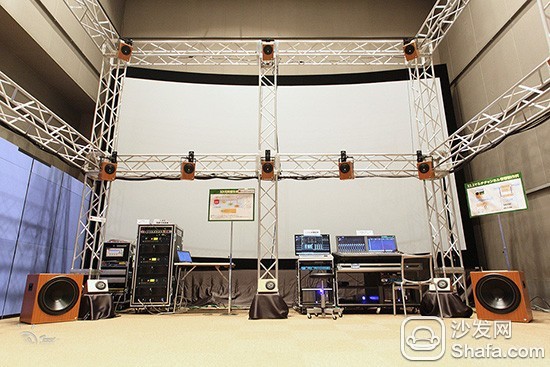
Japanese and U.S. research institutes have shown that HDTV widescreen can bring better visual experience than SDTV, so Super Hi-Vision video technology continues to use a 16:9 display ratio. The number of Super Hi-Vision standard pixels is HDCIF ( 1920×1080) 4 times (3840×2160) and 16 times (7680×4320). In addition, the color coordinates of the Super Hi-Vision video system such as the primary color coordinates, standard white light, photoelectric conversion function, brightness/color difference component equation, etc. All are compatible with existing ITU-R BT.709, SMPTE RP177 and other standards. In summary, it can be said that Super Hi-Vision video technology has achieved the ultimate in compatibility.
7680×4320 video capture “sub-era†models Super Hi-Vision video technology 7680×4320 Ultimate resolution has 33 million pixels, most of the full-frame SLR cameras on the market are now around 24 million pixels, in other words, large Most of the pictures taken by full-frame SLR cameras are still not covered with the screen of Super Hi-Vision display devices. How is the 7680×4320 resolution video captured?

The Super Hi-Vision video system was drafted as early as 2006, and the 7680×4320 video capture with a resolution of up to 33 million pixels can only be “a new wayâ€. NHK adopts a 4-channel dichroic prism designed by Fujinon and 4 Micron's. The CMOS image sensor with a capacity of more than 8 million pixels produced by science and technology constitutes a 4CMOS system. Two of them sense green light and perform oblique pixel shifting, and the other two respectively sense red light and blue light. Afterwards, NHK co-designed the camera required for Super Hi-Vision image quality with Ikegami Communication Co., Ltd.
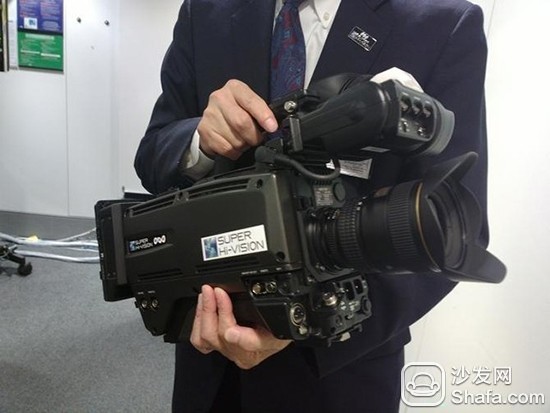
In 2011, Japan's NHK displayed the sample of a 2.5-inch 33-megapixel CMOS image sensor for the first time on the Open House platform, which attracted the attention of technical control. NHK engineers stated that after they comprehensively consider the resolution and size of the lens, sensor sensitivity and dynamic range, , decided to control the pixel size to 3.8 microns, and use low-voltage differential method to meet the needs of Super Hi-Vision cameras for high-speed transmission, and said that low-voltage differential mode can effectively reduce power consumption performance.
Naked eye 3D: Forced 120 frame rate on all 8K TVs After the Super Hi-Vision projector has completed video capture, it needs to be displayed on the corresponding Super Hi-Vision display terminal. Considering that Super Hi-Vision video technology still has much room for improvement and improvement Reliable display devices can be said to be equally critical to NHK.

In order to accurately restore the image quality of Super Hi-Vision technology, NHK teamed up with well-known projector manufacturer JVC Corporation. After in-depth cooperation, they successfully designed the projector required for Super Hi-Vision video technology. The projector has 1,000,000: 1 super high contrast.

The quality of Super Hi-Vision projectors contracted between NHK and JVC is extremely outstanding. It is reported that major brands such as Sony and NEC in the projector industry are studying Super Hi-Vision projector products. In addition to projectors, the current industry associated with Super Hi-Vision video technology is studying plasma displays over 100 inches, and even displays and televisions.

At CES2015, Sharp, Samsung, Panasonic, and LG respectively demonstrated the latest 8K TV products. All 8K TVs support 120Hz technology. The original intention was to improve 3D display technology to enhance the user experience. The current 3D technologies are all "semi-finished" products. Active shutter 3D brightness is reduced, glasses need to be charged, and they are not comfortable to wear. Flash-free 3D glasses need to be rechargeable and lighter to wear, but the screen resolution is reduced by half. It turns out that users are reluctant to wear 3D glasses at home, and Super Hi-Vision video technology will perfectly support naked-eye 3D technology. Without wearing glasses, you can enjoy the best stereoscopic effects. This is also the current 1080p TV and 4K TV can not be compared , a great innovation.
Amazing “200GB/minute†capacity for 8K original files. As we all know, the Blu-ray standard is 1920×1080 progressive resolution, 7.1 channels and 3D display technology that requires glasses. Super Hi-Vision video technology also has rigid standards, 7680×4320 progressive resolution, 22.2 channels, and naked-eye 3D display technology. It can be said that in addition to the horrific screen resolution, other aspects of Super Hi-Vision video technology are similarly “not "Leave a dead angle", the current maximum capacity of Blu-ray 50GB, Super Hi-Vision video technology how much?

According to the video capture results of the JVC Super Hi-Vision camera, a 1 minute 7680×4320 resolution video requires 194 GB of storage space. This amazing volume is huge for Super Hi-Vision Blu-ray and TV signals. pressure. In order to compress the original amount of information 16 times that of HDCIF to an acceptable level, NHK employs a method in which a plurality of codecs operate in parallel. In the past, MPEG-2 coding was used.
At Open House 2012, NHK demonstrated a prototype of a real-time codec based on MPEG-4 AVC/H.264 jointly developed with Fujitsu Laboratories to compress UHDTV's original 24Gbps stream to 1/100th the original value. To 1/200. In 2013, HEVC coding technology quickly leveraged the super-compression rate in the Super Hi-Vision area. Using the H.265/HEVC coding standard, HEVC coding technology can significantly reduce the capacity of 7680×4320 video files.
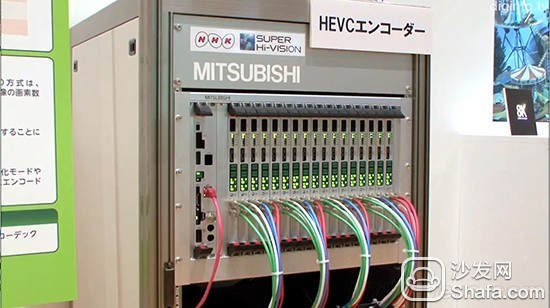
With the HEVC encoder, Super Hi-Vision's original data of 194 GB per minute is only 1/150 to 1/400 of that before compression, so the capacity of the Super Hi-Vision original video 194GB can be controlled at around 700 MB to 1 GB for 1 minute. In 2014, Japan’s Pioneer Company announced that 256GB Blu-ray discs have been made available for streaming, and Pioneer further announced that it will continue to increase the capacity of the discs in the future to achieve eight double-sided layers with a capacity of 32GB and a cumulative capacity of 512GB. A further 1 TB can be achieved in the future. Combined with the latest decoding technology of H.265, it means that the future 8K Blu-ray can be easily handled.
22.2-channel with the top 8K new "100%" perspective Super Hi-Vision video technology, a period of 1 minute of raw video will need to occupy about 200GB of storage space, the culprit locked in the ultra-high resolution of 7680 × 4320 is not fair, because Super Hi-Vision video technology provides a 22.2 channel audio system, which is one of the “culprits†that significantly increases capacity utilization.
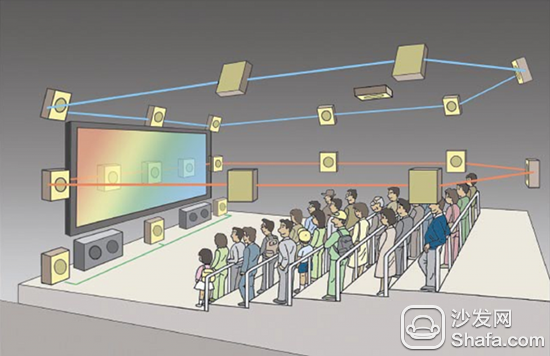
Super Hi-Vision video technology has 16x 1080p resolution, and the picture quality is extremely amazing. Then the audio quality of the Super Hi-Vision video system needs to be upgraded synchronously. In response, NHK provides a 22.2-channel sound system for Super Hi-Vision video technology. 22 audio sources are located at the front, rear, left, right, top, and bottom of the user, supplemented by 2 low-frequency audio sources. “Luxury The sound quality experience can be imagined with the prevailing Blu-ray prevailing 5.1/7.1 audio standard.
In addition, Japan will also use the 21GHz frequency band as the satellite broadcast of Super Hi-Vision video technology. After being compressed and modulated, Super Hi-Vision signals are sent to the exclusive 21GHz frequency band for TV broadcasting through an uplink converter. In terms of user terminals, Super Hi-Vision satellite TV signals are transmitted to a downstream converter and are displayed after decryption and decoding.
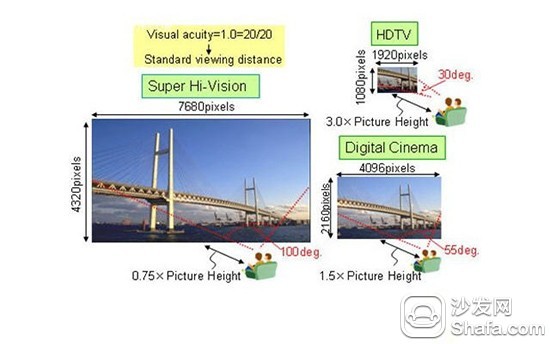
The Super Hi-Vision Video Technology 7680×4320 Ultra HD resolution not only spikes 1080p HDTV TVs from the visual sense, but also disregards the 4K-class cinema, and the audiovisual experience is extremely surprising. Taken together, NHK apparently places the next-generation Super Hi-Vision TV video technology on the 7680×4320. The entry-level version of 3840×2160 is just a bridge from HD to Ultra HD.
Japan's 8K TV signal transmission to commercial standards <br> As TV products, the primary task is to watch TV programs. At present, 1080p signal sources have been very popular in developed countries and have a good momentum in developing countries (including China). At present, the 4K TV signal is still in its infancy, while in Japan, the 4K TV signal is only a “transitionâ€. The real future TV standard should be positioned at 8K. In recent years, technical research on 8K TV signals has never stopped. Japan Recent news about 8K TV signals has brought new good news.
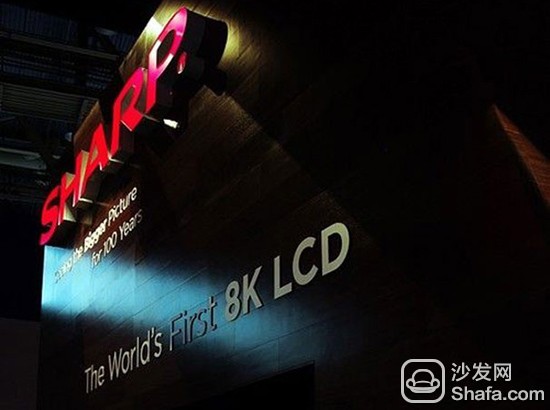
Japan’s NHK TV station is the core enterprise for the research of 8K TV signals. For TV signals, only the transmission distance reaches a certain level and there is a possibility of commercial use. In May 2012, Japan’s NHK TV station announced that the 8K TV signal can be transmitted at a distance. 4.4 kilometers, this news confirmed that 8K television signal is possible to achieve commercial use, and support for transmission distance needs further strengthening. In other words, besides the program content, the development of the 8K TV signal is hampered by the limitation of the transmission distance.
Recently, Japan’s NHK TV station officially announced that they have successfully transmitted 8K television signals through air signals to receiving stations 27 kilometers away. Compared to 4.4 kilometers two years ago, the transmission distance has been upgraded more than six times, basically and at present. The transmission distance of the 1080p television signal is the same. What's more, the transmission distance of 27 kilometers and the 8K video broadcasting content transmission of NHK TV station in Japan did not have any signal loss. The success of this technology means that the 8K TV signal has met the commercial demand.
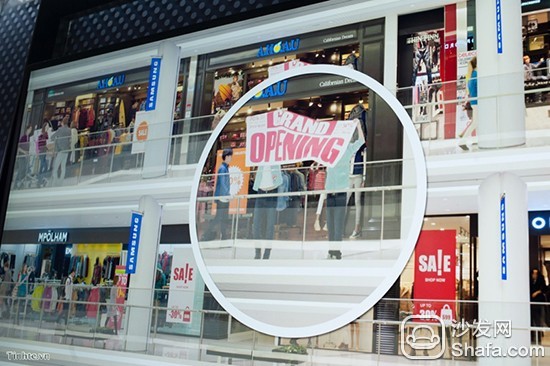
At present, 4K TVs are in an outbreak period, and 8K TVs have begun to emerge. The relationship between them is a bit like today's 720p and 1080p, and 1080p is the highest standard in the HD era. 8K will also be the highest standard in the Ultra HD era, from the perspective of development. From the perspective, it is clear that 8K is the future of Ultra HDTV. Nowadays, NHK TV station is ready for the commercialization of 8K TV signals and can meet the demands of the future international sports competitions. At the same time, the United States will also adopt this standard. Everything shows that 8K is the end point of Ultra HD.
Standards determine everything: 4K is a transition, 8K is a heritage <br> Up to now, the 4K standard has not been introduced yet, and the high-end Super Hi-Vision / 8K UHDTV standard was established as early as 2006: 16 times 1080p Extreme resolution, 22.2 surround channels and naked eye 3D display technology. NHK said that the Super Hi-Vision video project will be officially launched in 2015 and will be officially commercialized in 2020. At that time, the US will use Super Hi-Vision as the next-generation TV video technology. In other words, nowadays popular 4K TVs are most likely just transitional products.

Ultra High Definition 8K TV Technology Detailed Analysis Ultra High Definition Television (UHDTV), translated as Ultra HDTV, and the UHDTV TV standard official registered name is “Super Hi-Visionâ€. Strictly speaking, Super Hi-Vision is the next generation TV. The exact name of the video technology. So what is the relationship between the Super Hi-Vision standard and 4K and 8K TVs? We illustrate it with a picture.

Super Hi-Vision / 8K Ultra HD uses the same standard
Since its inception, 4K television has been lack of strict standards support. In addition to the rigid resolution requirement of 3840×2160, the remaining indicators continue to use the existing Full HD (1080p) standard, which is completely inconsequential to the so-called “sub-eraâ€. The Super Hi-Vision standard, which has long been approved by the International Telecommunication Union (ITU) and the Society of Motion Picture and Television Engineers (SMPTE), has new and detailed indicators. The picture frame rate, standard viewing distance, viewing angle mode, and audio standard have all been greatly improved. .

Ultra HD 8K resolution is only one of the "hard targets" of the Super Hi-Vision standard. <br> As you can see, the Super Hi-Vision standard resolution is 7680×4320, and the total number of pixels is as high as 33 million; for better support With naked-eye 3D display technology, the Super Hi-Vision frame rate has been upgraded to 120fps, and the standard viewing distance and viewing mode have also been greatly improved. More importantly, the 22.2-channel standard corresponds to the 8K Ultra HD resolution, and there is no comparability between the 4K and 1080p resolution 5.1 channels.
Super Hi-Vision Standard Development History
The history of Super Hi-Vision's standard development dates back to 2006. At that time, the NHK Science and Technical Research Laboratories (NHK) submitted the Super Hi-Vision video technology to the International Telecommunication Union (ITU) and the Society of Motion Picture and Television Engineers (SMPTE) respectively. Standardization application, followed by the International Telecommunication Union's recommendation of Super Hi-Vision video technology as UHDTV.

Super Hi-Vision complete specification
When NHK applied for the standardization of Super Hi-Vision video technology, it said that the technology is a digital video system designed to represent programs in variety shows, sports, drama, film and television, and concerts, given that 1920×1080 has become a high-definition universal image format (HDCIF). Therefore, Super Hi-Vision's image format quality needs to be higher than the existing HDCIF standard. Super Hi-Vision video technology is divided into two standards: UHDTV1 (3840×2160) and UHDTV2 (7680×4320). According to different countries and regions supporting 50Hz, 60Hz and 59.94Hz frame rates, all frame rates use progressive scan.

Super Hi-Vision Video Technology R&D Lab
Japanese and U.S. research institutes have shown that HDTV widescreen can bring better visual experience than SDTV, so Super Hi-Vision video technology continues to use a 16:9 display ratio. The number of Super Hi-Vision standard pixels is HDCIF ( 1920×1080) 4 times (3840×2160) and 16 times (7680×4320). In addition, the color coordinates of the Super Hi-Vision video system such as the primary color coordinates, standard white light, photoelectric conversion function, brightness/color difference component equation, etc. All are compatible with existing ITU-R BT.709, SMPTE RP177 and other standards. In summary, it can be said that Super Hi-Vision video technology has achieved the ultimate in compatibility.
7680×4320 video capture “sub-era†models Super Hi-Vision video technology 7680×4320 Ultimate resolution has 33 million pixels, most of the full-frame SLR cameras on the market are now around 24 million pixels, in other words, large Most of the pictures taken by full-frame SLR cameras are still not covered with the screen of Super Hi-Vision display devices. How is the 7680×4320 resolution video captured?

Super Hi-Vision Video Capture Camera "Pretentious Volume" Before 2012
The Super Hi-Vision video system was drafted as early as 2006, and the 7680×4320 video capture with a resolution of up to 33 million pixels can only be “a new wayâ€. NHK adopts a 4-channel dichroic prism designed by Fujinon and 4 Micron's. The CMOS image sensor with a capacity of more than 8 million pixels produced by science and technology constitutes a 4CMOS system. Two of them sense green light and perform oblique pixel shifting, and the other two respectively sense red light and blue light. Afterwards, NHK co-designed the camera required for Super Hi-Vision image quality with Ikegami Communication Co., Ltd.

The Super Hi-Vision Video Capture Camera After 2013 is “Small and Portable Manyâ€
In 2011, Japan's NHK displayed the sample of a 2.5-inch 33-megapixel CMOS image sensor for the first time on the Open House platform, which attracted the attention of technical control. NHK engineers stated that after they comprehensively consider the resolution and size of the lens, sensor sensitivity and dynamic range, , decided to control the pixel size to 3.8 microns, and use low-voltage differential method to meet the needs of Super Hi-Vision cameras for high-speed transmission, and said that low-voltage differential mode can effectively reduce power consumption performance.
Naked eye 3D: Forced 120 frame rate on all 8K TVs After the Super Hi-Vision projector has completed video capture, it needs to be displayed on the corresponding Super Hi-Vision display terminal. Considering that Super Hi-Vision video technology still has much room for improvement and improvement Reliable display devices can be said to be equally critical to NHK.

JVC Super Hi-Vision Projector
In order to accurately restore the image quality of Super Hi-Vision technology, NHK teamed up with well-known projector manufacturer JVC Corporation. After in-depth cooperation, they successfully designed the projector required for Super Hi-Vision video technology. The projector has 1,000,000: 1 super high contrast.

Ultra HD 8K can clearly identify the player's name
The quality of Super Hi-Vision projectors contracted between NHK and JVC is extremely outstanding. It is reported that major brands such as Sony and NEC in the projector industry are studying Super Hi-Vision projector products. In addition to projectors, the current industry associated with Super Hi-Vision video technology is studying plasma displays over 100 inches, and even displays and televisions.

8K TV resolution 16 times Full HD and support for naked eye 3D technology (120Hz in the lower right corner)
At CES2015, Sharp, Samsung, Panasonic, and LG respectively demonstrated the latest 8K TV products. All 8K TVs support 120Hz technology. The original intention was to improve 3D display technology to enhance the user experience. The current 3D technologies are all "semi-finished" products. Active shutter 3D brightness is reduced, glasses need to be charged, and they are not comfortable to wear. Flash-free 3D glasses need to be rechargeable and lighter to wear, but the screen resolution is reduced by half. It turns out that users are reluctant to wear 3D glasses at home, and Super Hi-Vision video technology will perfectly support naked-eye 3D technology. Without wearing glasses, you can enjoy the best stereoscopic effects. This is also the current 1080p TV and 4K TV can not be compared , a great innovation.
Amazing “200GB/minute†capacity for 8K original files. As we all know, the Blu-ray standard is 1920×1080 progressive resolution, 7.1 channels and 3D display technology that requires glasses. Super Hi-Vision video technology also has rigid standards, 7680×4320 progressive resolution, 22.2 channels, and naked-eye 3D display technology. It can be said that in addition to the horrific screen resolution, other aspects of Super Hi-Vision video technology are similarly “not "Leave a dead angle", the current maximum capacity of Blu-ray 50GB, Super Hi-Vision video technology how much?

Blu-ray 1080p capacity is limited to 50GB
According to the video capture results of the JVC Super Hi-Vision camera, a 1 minute 7680×4320 resolution video requires 194 GB of storage space. This amazing volume is huge for Super Hi-Vision Blu-ray and TV signals. pressure. In order to compress the original amount of information 16 times that of HDCIF to an acceptable level, NHK employs a method in which a plurality of codecs operate in parallel. In the past, MPEG-2 coding was used.
At Open House 2012, NHK demonstrated a prototype of a real-time codec based on MPEG-4 AVC/H.264 jointly developed with Fujitsu Laboratories to compress UHDTV's original 24Gbps stream to 1/100th the original value. To 1/200. In 2013, HEVC coding technology quickly leveraged the super-compression rate in the Super Hi-Vision area. Using the H.265/HEVC coding standard, HEVC coding technology can significantly reduce the capacity of 7680×4320 video files.

Super Hi-Vision adopts HEVC coding technology
With the HEVC encoder, Super Hi-Vision's original data of 194 GB per minute is only 1/150 to 1/400 of that before compression, so the capacity of the Super Hi-Vision original video 194GB can be controlled at around 700 MB to 1 GB for 1 minute. In 2014, Japan’s Pioneer Company announced that 256GB Blu-ray discs have been made available for streaming, and Pioneer further announced that it will continue to increase the capacity of the discs in the future to achieve eight double-sided layers with a capacity of 32GB and a cumulative capacity of 512GB. A further 1 TB can be achieved in the future. Combined with the latest decoding technology of H.265, it means that the future 8K Blu-ray can be easily handled.
22.2-channel with the top 8K new "100%" perspective Super Hi-Vision video technology, a period of 1 minute of raw video will need to occupy about 200GB of storage space, the culprit locked in the ultra-high resolution of 7680 × 4320 is not fair, because Super Hi-Vision video technology provides a 22.2 channel audio system, which is one of the “culprits†that significantly increases capacity utilization.

Super Hi-Vision provides 22.2-channel sound system
Super Hi-Vision video technology has 16x 1080p resolution, and the picture quality is extremely amazing. Then the audio quality of the Super Hi-Vision video system needs to be upgraded synchronously. In response, NHK provides a 22.2-channel sound system for Super Hi-Vision video technology. 22 audio sources are located at the front, rear, left, right, top, and bottom of the user, supplemented by 2 low-frequency audio sources. “Luxury The sound quality experience can be imagined with the prevailing Blu-ray prevailing 5.1/7.1 audio standard.
In addition, Japan will also use the 21GHz frequency band as the satellite broadcast of Super Hi-Vision video technology. After being compressed and modulated, Super Hi-Vision signals are sent to the exclusive 21GHz frequency band for TV broadcasting through an uplink converter. In terms of user terminals, Super Hi-Vision satellite TV signals are transmitted to a downstream converter and are displayed after decryption and decoding.

Surprising advantages of 7680×4320 Ultra HD resolution
The Super Hi-Vision Video Technology 7680×4320 Ultra HD resolution not only spikes 1080p HDTV TVs from the visual sense, but also disregards the 4K-class cinema, and the audiovisual experience is extremely surprising. Taken together, NHK apparently places the next-generation Super Hi-Vision TV video technology on the 7680×4320. The entry-level version of 3840×2160 is just a bridge from HD to Ultra HD.
Japan's 8K TV signal transmission to commercial standards <br> As TV products, the primary task is to watch TV programs. At present, 1080p signal sources have been very popular in developed countries and have a good momentum in developing countries (including China). At present, the 4K TV signal is still in its infancy, while in Japan, the 4K TV signal is only a “transitionâ€. The real future TV standard should be positioned at 8K. In recent years, technical research on 8K TV signals has never stopped. Japan Recent news about 8K TV signals has brought new good news.

Sharp's first 8K TV - 85 inches (will be available in 2015)
Japan’s NHK TV station is the core enterprise for the research of 8K TV signals. For TV signals, only the transmission distance reaches a certain level and there is a possibility of commercial use. In May 2012, Japan’s NHK TV station announced that the 8K TV signal can be transmitted at a distance. 4.4 kilometers, this news confirmed that 8K television signal is possible to achieve commercial use, and support for transmission distance needs further strengthening. In other words, besides the program content, the development of the 8K TV signal is hampered by the limitation of the transmission distance.
Recently, Japan’s NHK TV station officially announced that they have successfully transmitted 8K television signals through air signals to receiving stations 27 kilometers away. Compared to 4.4 kilometers two years ago, the transmission distance has been upgraded more than six times, basically and at present. The transmission distance of the 1080p television signal is the same. What's more, the transmission distance of 27 kilometers and the 8K video broadcasting content transmission of NHK TV station in Japan did not have any signal loss. The success of this technology means that the 8K TV signal has met the commercial demand.

Samsung 98-inch 8K TV detail zoom: color and clarity are still terror
At present, 4K TVs are in an outbreak period, and 8K TVs have begun to emerge. The relationship between them is a bit like today's 720p and 1080p, and 1080p is the highest standard in the HD era. 8K will also be the highest standard in the Ultra HD era, from the perspective of development. From the perspective, it is clear that 8K is the future of Ultra HDTV. Nowadays, NHK TV station is ready for the commercialization of 8K TV signals and can meet the demands of the future international sports competitions. At the same time, the United States will also adopt this standard. Everything shows that 8K is the end point of Ultra HD.
Standards determine everything: 4K is a transition, 8K is a heritage <br> Up to now, the 4K standard has not been introduced yet, and the high-end Super Hi-Vision / 8K UHDTV standard was established as early as 2006: 16 times 1080p Extreme resolution, 22.2 surround channels and naked eye 3D display technology. NHK said that the Super Hi-Vision video project will be officially launched in 2015 and will be officially commercialized in 2020. At that time, the US will use Super Hi-Vision as the next-generation TV video technology. In other words, nowadays popular 4K TVs are most likely just transitional products.
